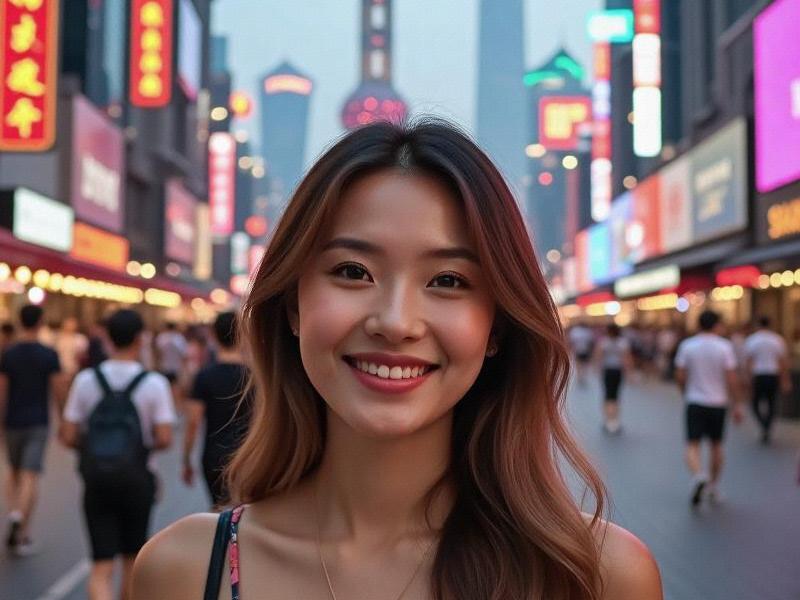"Concrete & Courtyards: Shanghai's Dual Soul in the Age of Quantum Urbanism"
⏱ 2025-06-12 00:14 🔖 上海龙凤419
📢0℃

[Dateline: TIANZIFANG ARTS DISTRICT, June 8, 2025]
The recent discovery of 1920s jazz recordings embedded in the QR codes of restored shikumen bricks exemplifies Shanghai's unique approach to urban evolution - where augmented reality doesn't erase history but rather amplifies its resonance in contemporary life.
[Section 1: The Smart Lanehouse Paradox]
In the rebuilt Xintiandi 3.0 quarter, traditional longtang alleys now feature:
- AI-powered humidity control preserving century-old brickwork
- Invisible 5G relays disguised as vintage street lamps
- Holographic storytellers activated by residents' biometric signatures
夜上海419论坛 "Technology here serves memory," explains restoration architect Lin Yue, demonstrating how motion sensors trigger projections of historical residents when detecting footsteps.
[Section 2: The Quantum Marketplace]
Nanjing Road's "Temporal Bazaar" prototype blends commerce across eras:
- Digital yuan transactions for physical qipao silks
- AR filters letting shoppers "try on" 1930s accessories
- Blockchain-authenticated vintage posters sold as NFTs
"Past and present inventories now share the same digital shelf space," says retail futurist Dr. Zhang, highlighting how historical commerce data informs modern inventory algorithms.
上海龙凤419社区
[Section 3: The Community Algorithm]
The "Neighborhood Brain" project in Jing'an District:
- Uses municipal data to recrteealost social patterns
- Matches elderly residents with compatible volunteers via AI
- Optimizes public space usage based on century-old activity maps
"We're not just building smart cities - we're cultivating wise communities," notes sociologist Prof. Chen, showing how the system revived tea-sharing traditions that died out in the 1990s.
上海龙凤419官网 [Section 4: The Dialect Preservation Initiative]
Shanghai's endangered vernacular finds new life through:
- Voice-activated elevators responding only in Shanghainese
- AR street signs displaying colloquial phrases
- AI-generated "dialect guardians" in community centers
"Language isn't just preserved in books - it must live in the streets," argues cultural activist Mei Lin, whose team developed a talking statue of writer Eileen Chang that converses in period-accurate slang.
[Closing]
From blockchain-protected heritage sites to AI-curated oral histories, Shanghai demonstrates that urban futurism needn't sacrifice cultural continuity. As the city prepares to launch its "Time Bridge" holographic archive - allowing residents to consult historical shopkeepers about modern problems - it becomes clear that in Shanghai, progress and preservation aren't opposites but symbiotic forces.
Shanghai Beauties: An Urban SafariKeywords: Shanghai, Urban Safari, Beauty, City Life, Cultural Heritage, Modern Architecture, Nightlife, Shopping, FoShanghai's Dual Identity: Preserving Heritage While Building the FutureThe Glittering Nightlife of Shanghai: Where East Meets West in Entertainment ExcellenceSilk & Silicon: The Dual Identity of Shanghai's Modern WomenThe Yangtze River Delta Megaregion: How Shanghai and Its Neighbors Are Redefining Urban Development in China《梧桐树下的城市密码:上海衡复风貌区百年叙事》霓虹灯影里的海派夜宴:上海娱乐会所的百年烟火与文化新生Neon Renaissance: How Shanghai's Elite Clubs Are Redefining NightlifeNeon Renaissance: How Shanghai's Elite Clubs Are Redefining Nightlife CultureThe Silicon Bund: How Shanghai Became China's Unexpected Tech Powerhouse

